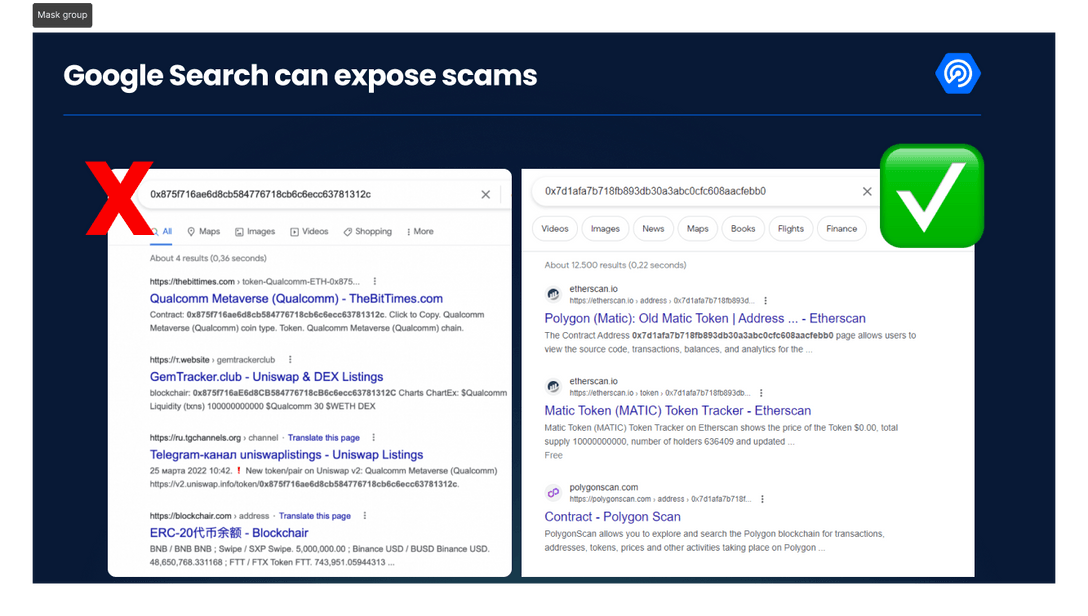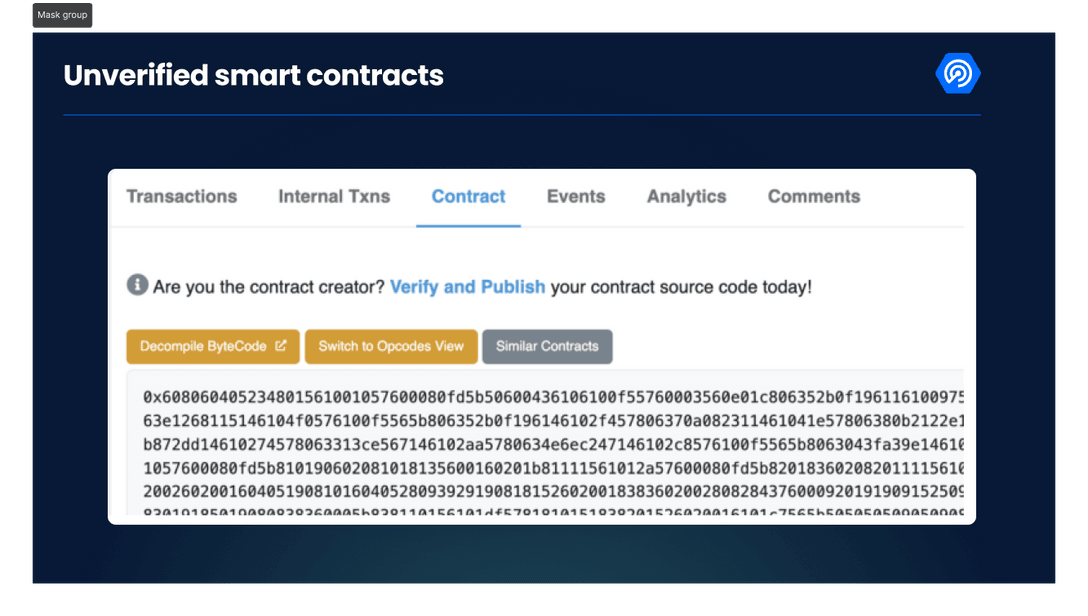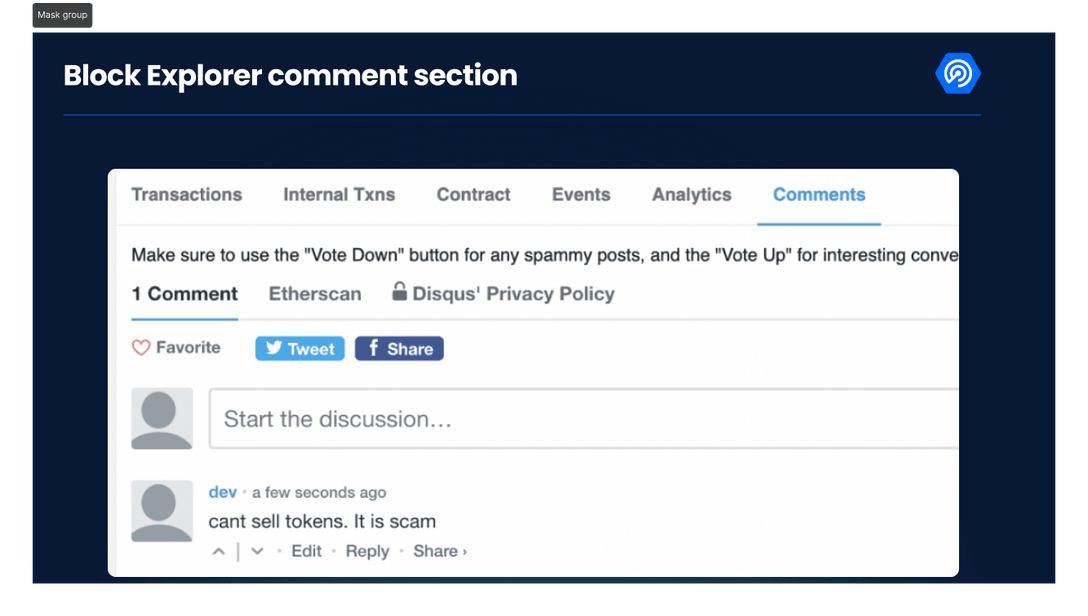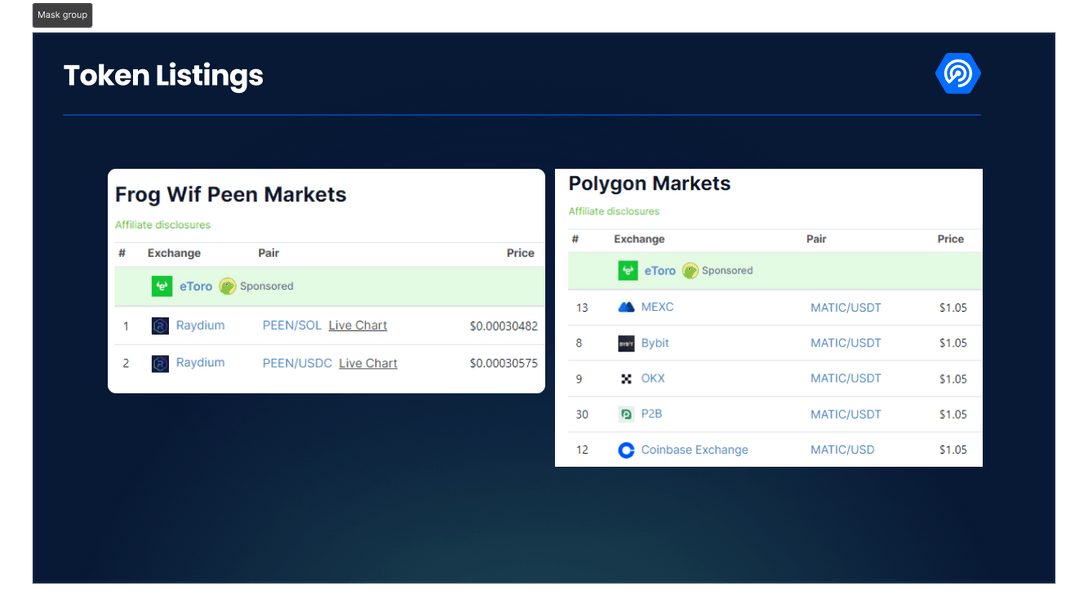Original article by Darius Devėnas , DappRadar
Original translation: Felix, PANews
The blockchain industry is flooded with promises of quick, easy money. It is crucial to identify which projects are safe and which are doomed to fail after 3 months. This article presents eight checks to help traders avoid effective scams.
1. Start with the Basics
To verify the legitimacy of a coin, start with the most easily accessible methods, such as Google searches and Twitter. This includes researching the coin and its team, checking for any red flags or warning signs, and looking for reliable sources of information, such as official websites, news articles, and verified social media accounts.
Check for social media red flags
A verified X(Twitter) account can often help prove the legitimacy of the project. In addition, you can participate in discussions about the token to understand the community's views and opinions.
Be wary of projects that have a large following on social media but very low engagement. Automated comments from fake accounts should also be a red flag. If all the comments are “this is a great project” and “Moon is coming soon,” beware.
Check the coin address in Google Search
If searching the internet, you can’t find a clear homepage, “whitepaper,” or obvious purpose for the token, it’s likely a scam. When searching for a token address, you must easily find a block explorer link, official website, and whitepaper. If not, take it as a red flag.
Also, be aware that Google ads are often free range for scam sites. Never click on ads at the top of Google search results. Always make sure you visit official websites and avoid clicking on Wallet Drainers (note: malicious scripts targeting crypto wallets that transfer assets to attackers) or other hacker software.

2. Verify the code on Etherscan
Visit the block explorer of your chosen chain and see if the source code is verified. For example, on Ethereum’s block explorer Etherscan, it looks like this. The code in the image below is not verified, which should be a clear warning sign. If the code is not verified, you may have encountered a scam.

Why don't the scammers just verify their code?
Because once the source code of a contract is public, everyone can know the intention behind the contract. Or a ridiculous token system, or a way for the developer to steal all your tokens. But does this mean that every unverified contract is a scam? Not necessarily, but it is a very serious red flag.
3. Check the Etherscan comments section
This part is pretty easy, there is usually a comment section on each block explorer. Most of the time there are no comments, but if a project is a scam you may find a bunch of angry people in the comments section. So make sure to click through. If someone says it is a scam, 99% of the time it is a scam. If you have been a victim of this project, please leave a comment as well. 
4. Check DappRadar blacklist
You can compare it to the token blacklist compiled by DappRadar on Github. If the token address appears on the list, it is a scam.
5. Check the token details in the token index
If you can’t find the token on Coingecko or DappRada r’s token index (or similar token price trackers), then the token is likely a scam. If you see a warning like the one below, proceed with caution:
All legal tokens share their information with the token index website for verification. However, platforms like CoinMarketCap and Coingecko require certain specific conditions to be met. Therefore, not all tokens, legal or not, are automatically listed on this token index platform.
6. Check how many exchanges have listed the token
If a token is only traded on a few decentralized exchanges (DEX), it may be a scam. Listing on a centralized exchange requires KYC and additional trust, and the larger the exchange, the better the reputation of the listed token.
But not all tokens listed only on DEX are scams. Some projects do not require high trading volume, and some projects are only available to Web3 users rather than token traders.
However, tokens that are only listed on DEXs are a riskier investment and you are more likely to run into scams. The left side of the picture below shows a token that is only used on DEXs, while the right side shows a token that can be used on multiple CEXs.

7. Check the liquidity in the token balance pool
Before investing in a token, one may want to check the overall demand and the availability of liquidity. It is very easy to check the liquidity of a token on platforms like Uniswap V2 or other DEXs.
Liquidity refers to the amount of cryptocurrency or tokens locked in a smart contract, allowing users to buy and sell assets through (decentralized) exchanges. If liquidity is below $100,000 or dropping rapidly, you may be dealing with a scam.
When you use a DEX, always check for essential other on-chain activity, including:
Trading volume
Number of transactions
Unique active wallets interacting with smart contracts — the number of users connecting to the DEX using a Web3 wallet.
If any of these seem unusual, do a little more research.
8. Use third-party analytics tools
Here are some coin analysis tools:
Smell Test : Automated audit of tokens. The maximum score is 100, the lower the score, the more likely it is a scam.
Honeypot : A honeypot is a smart contract that has an intentionally obvious programming flaw inserted into it. When an attacker exploits the flaw, another hidden piece of code is activated that strikes back at the attacker. Whether you intend to be a crypto hacker or not, honeypots should be avoided.
DEXtools : records the real-time price of tokens and will help you evaluate the true value of tokens in real time.
Scammers will always exist, both on the blockchain and in the real world. Following these tips should help you avoid fake tokens designed to defraud your funds.



